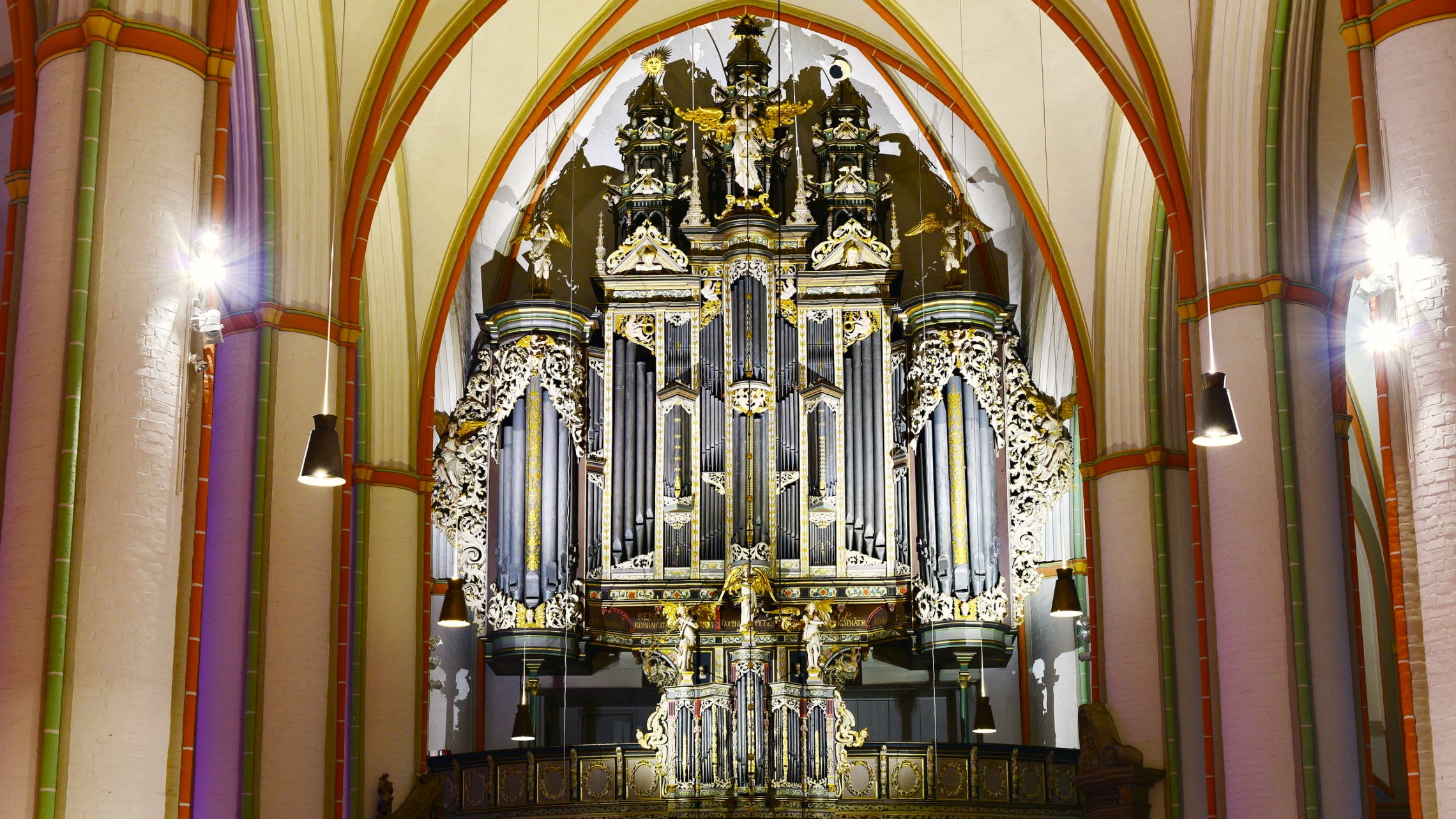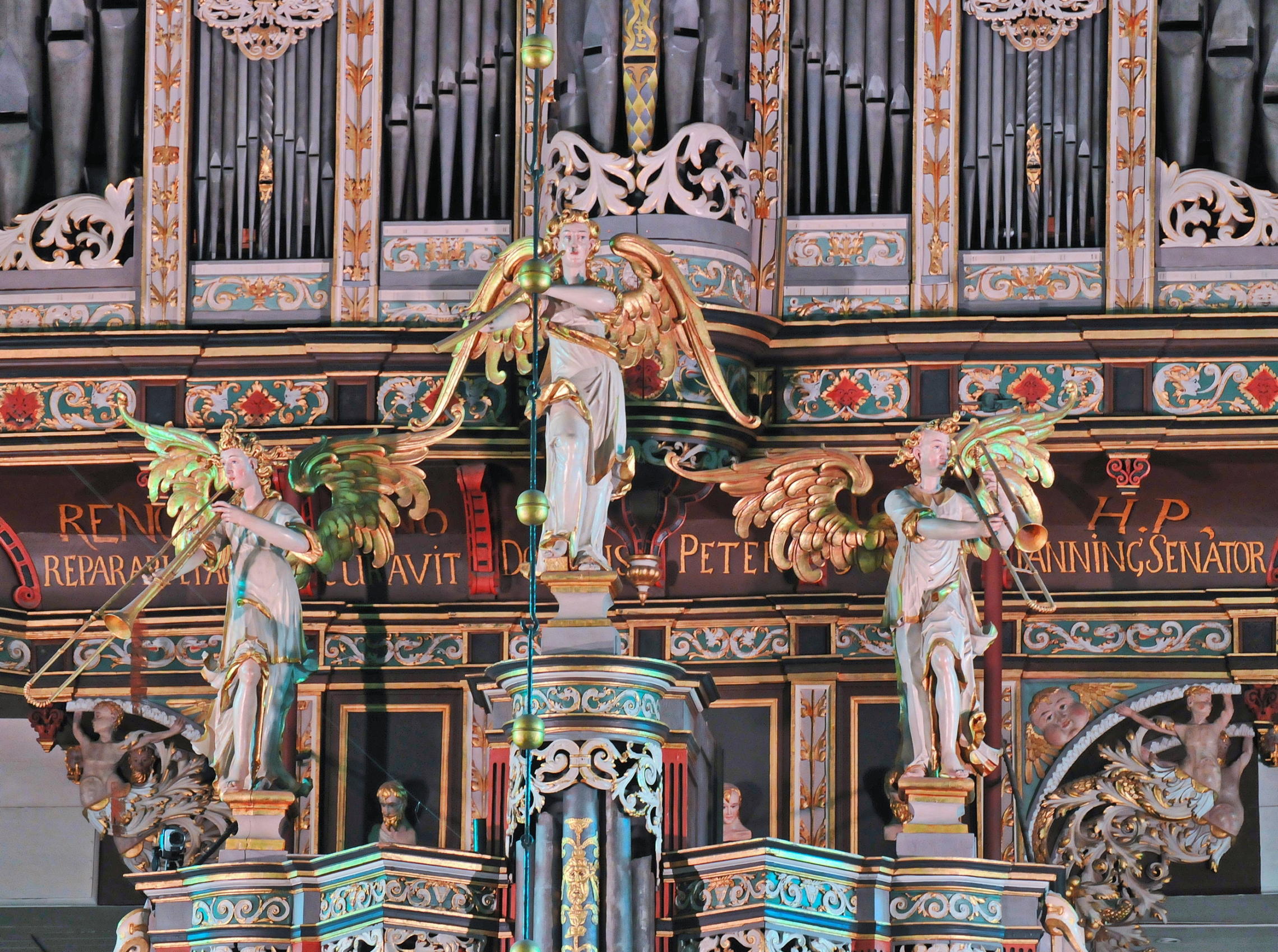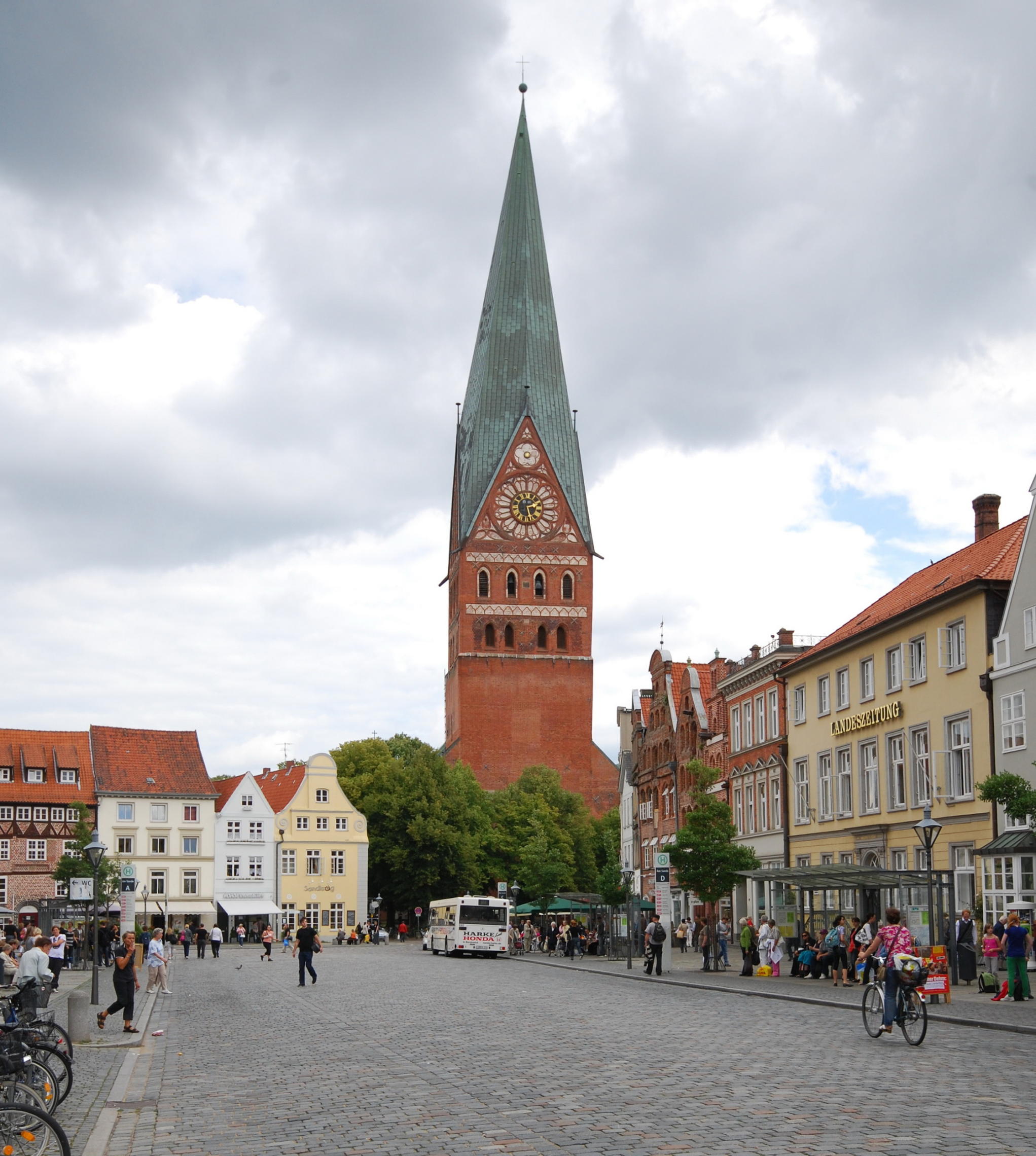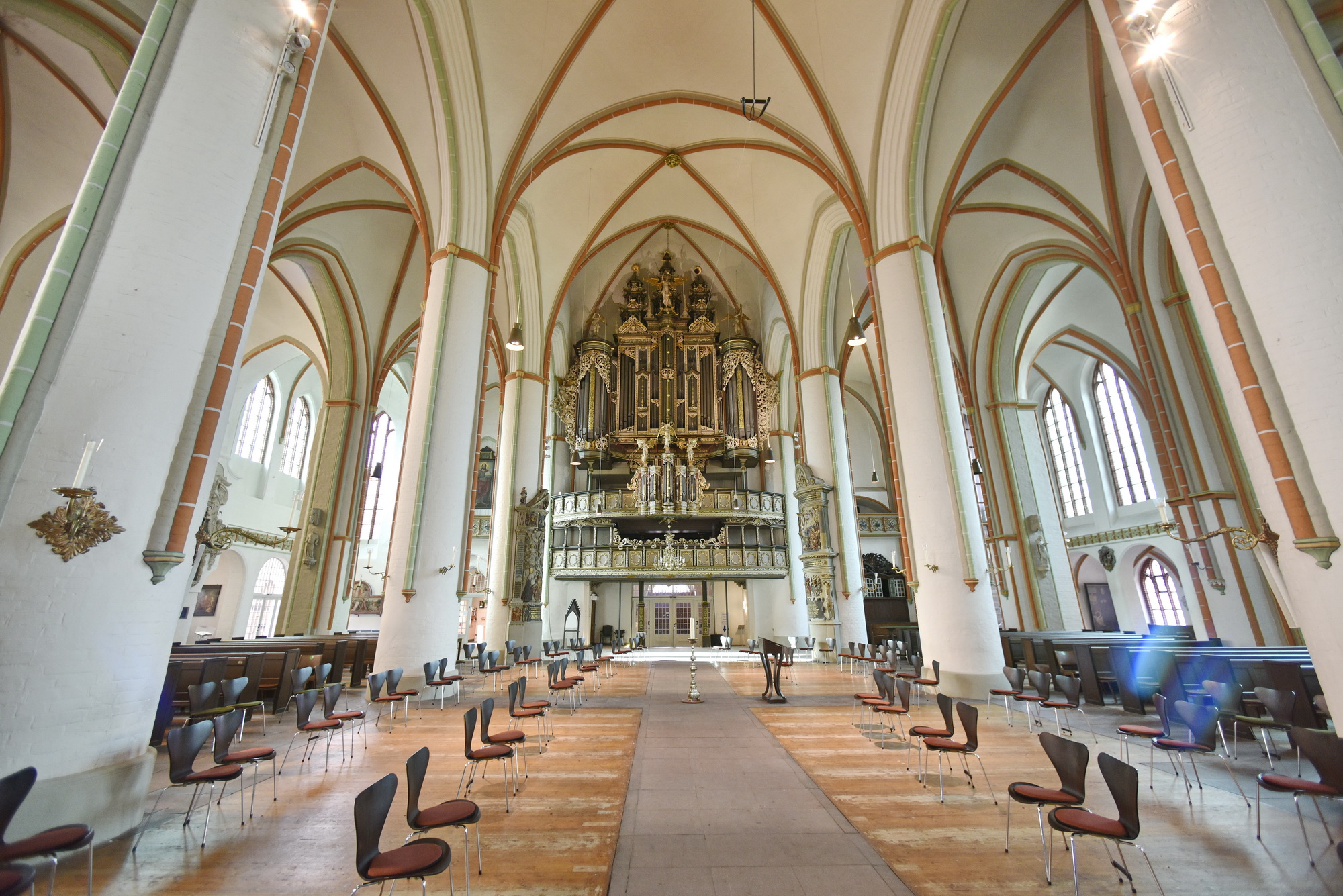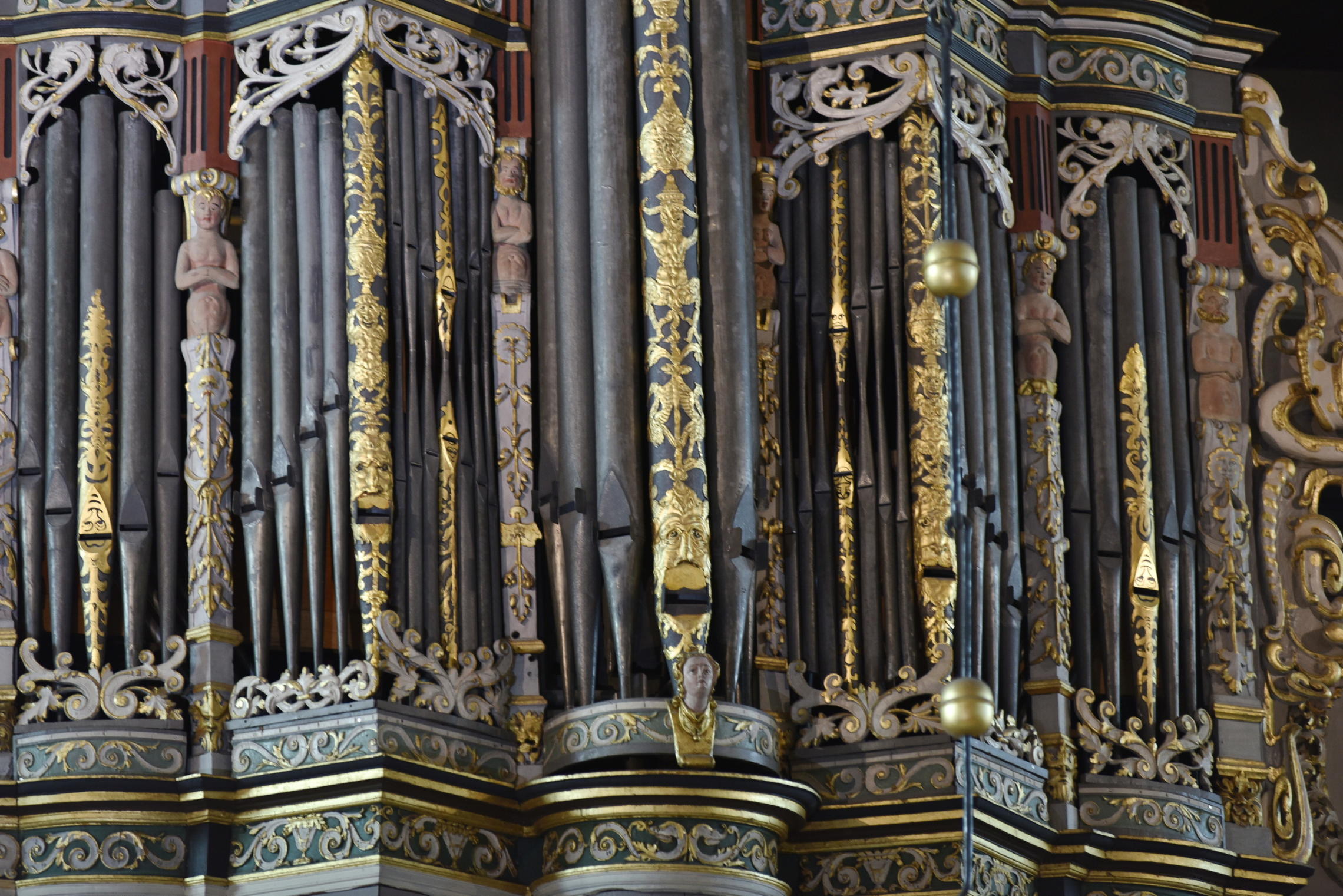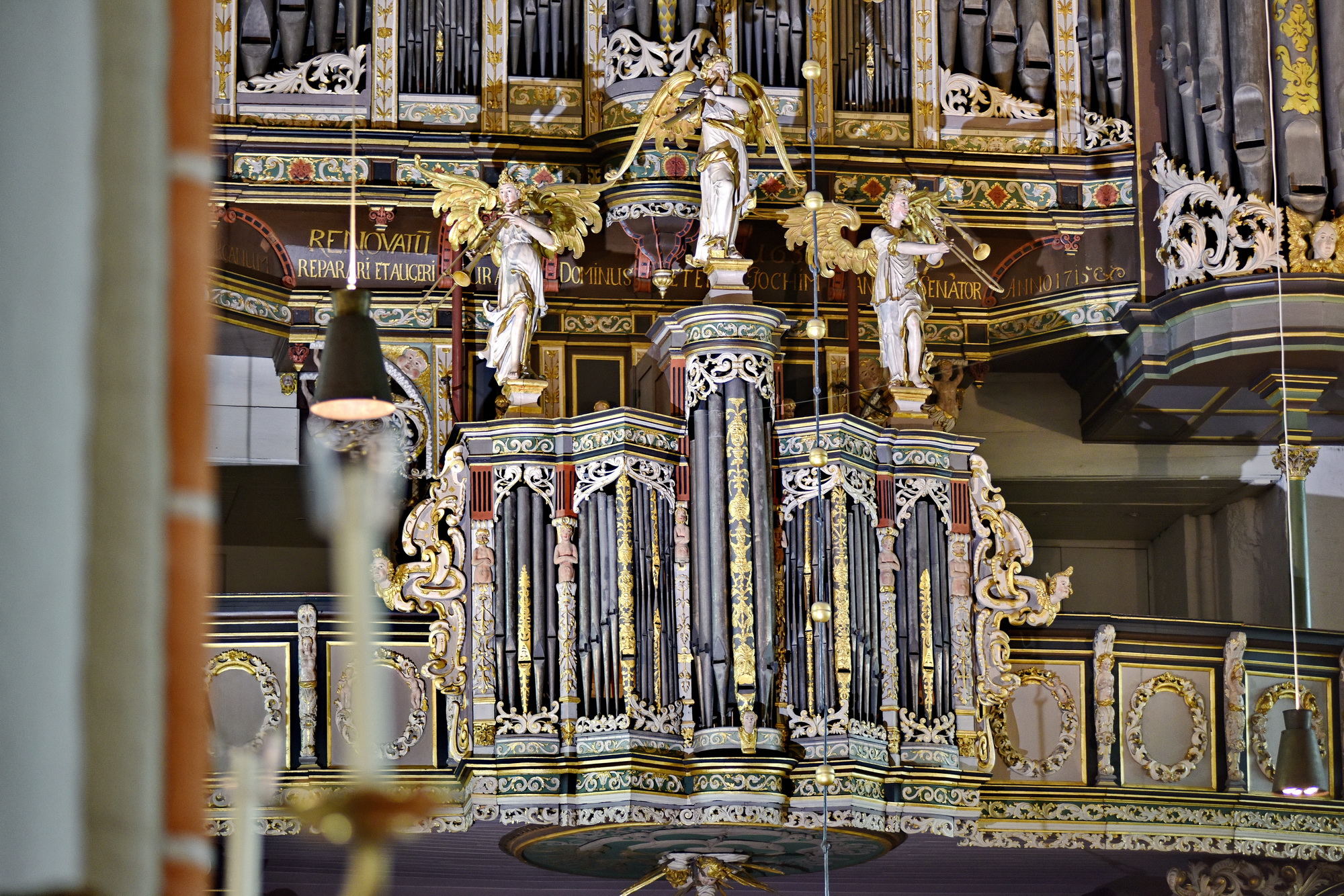Lüneburg, St. Johannis (Main Organ)
| Builder | H. Niehoff |
|---|---|
| Year | ca. 1553 |
| Period/Style | Renaissance |
| Stops | 51 |
| Keyboards | 3+P |
| Keyaction | tracker/mechanical |
| Tuning | Equal at 453.0 Hz |
The pipe organ was constructed in 1553 by Hendrik Niehoff and Jasper Johansen in the Netherlands, specifically in 's-Hertogenbosch. The church assigned them to build a large organ which was then transported to Lüneburg, Germany via Amsterdam and Hamburg. The famous Brabant organ builders finished the work in 1553 and received a payment of 1000 Talers. In 1576, Dirck Hoyer from Hamburg added a substructure to the pedal, which was otherwise attached to a separate wind chest halfway behind the main work.
In his Organographia from 1619, Michael Praetorius documents that the organ was largely designed as block work and consisted of three sections with pedals and 27 other modules. There was an additional bass octave in the main work, where eight pipes were placed in the lateral flat fields of the main work housing. Outlined by Praetorius, the primary register was playable in the 16-foot counter octave.
Throughout the 17th and 18th centuries, the organ was extended several times. Notably, in 1651/52, Friedrich Stellwagen from Lübeck increased the tuning pitch from 415 to 465 Hz. Essential changes to the instrument took place after repairs in the years 1739, 1755, and 1809, including a romantic transformation from 1850 to 1853 by Eduard Meyer.
In 1943, due to its value, the organ's casing was preserved, and under the influence of the organ movement, appreciation for the organ increased in the 20th century. Renowned German organ builder, Rudolf Von Beckerath, restored the organ in several phases. Notably, he conserved the old pipe collection from the Renaissance and Baroque periods and reversed modifications in intonation from later years.
In 1976, the organ underwent significant overhaul – the keyboards and mechanical action were replaced, as well as part of the wind chests. Expanded keyboard ranges and pedal couplings were maintained. In 1992, Von Beckerath renewed the beakers of the bass octave of the trombone 32'. A restoration is planned for 2025-27 by Hendrik Ahrend.
In his Organographia from 1619, Michael Praetorius documents that the organ was largely designed as block work and consisted of three sections with pedals and 27 other modules. There was an additional bass octave in the main work, where eight pipes were placed in the lateral flat fields of the main work housing. Outlined by Praetorius, the primary register was playable in the 16-foot counter octave.
Throughout the 17th and 18th centuries, the organ was extended several times. Notably, in 1651/52, Friedrich Stellwagen from Lübeck increased the tuning pitch from 415 to 465 Hz. Essential changes to the instrument took place after repairs in the years 1739, 1755, and 1809, including a romantic transformation from 1850 to 1853 by Eduard Meyer.
In 1943, due to its value, the organ's casing was preserved, and under the influence of the organ movement, appreciation for the organ increased in the 20th century. Renowned German organ builder, Rudolf Von Beckerath, restored the organ in several phases. Notably, he conserved the old pipe collection from the Renaissance and Baroque periods and reversed modifications in intonation from later years.
In 1976, the organ underwent significant overhaul – the keyboards and mechanical action were replaced, as well as part of the wind chests. Expanded keyboard ranges and pedal couplings were maintained. In 1992, Von Beckerath renewed the beakers of the bass octave of the trombone 32'. A restoration is planned for 2025-27 by Hendrik Ahrend.
| I Rückpositiv | II Hauptwerk | III Oberwerk | Pedal |
|---|---|---|---|
| Prinzipal 8′ N | Prinzipal 16′ N/K | Prinzipal 8′ N | Prinzipal 16′ D |
| Gedackt 8′ B | Quintadena 16′ D | Rohrflöte 8′ N | Untersatz 16′ H |
| Quintadena 8′ N | Oktave 8′ D/M | Oktave 4′ D | Oktave 8′ D |
| Oktave 4′ N/D/B | Gedackt 8′ M | Blockflöte 4′ M | Gedackt 8′ D |
| Rohrflöte 4′ M/B | Oktave 4′ N/D | Nasat 2 2/3′ N | Oktave 4′ D |
| Sesquialtera II D/B | Nachthorn 4′ M | Gemshorn 2′ N | Nachthorn 2′ D |
| Waldflöte 2′ M/B | Quinte 2 2/3′ D/M | Terzian II B | Bauernflöte 1′ M |
| Sifflöte 1 1/3′ B | Oktave 2′ N/D | Oktave 1′ B | Rauschpfeife II M |
| Scharff V-VII 1′ B | Bauernflöte 2′ M | Mixtur V-VI 1′ M/B | Mixtur VI-VIII 2′ D/B |
| Dulzian 16′ D | Mixtur VI-VIII 1 1/3′ D/B | Zimbel III 1/6′ B | Posaune 32′ D/B |
| Bärpfeife 8′ B | Scharff IV-V 2/3′ B | Trompete 8′ B | Posaune 16′ D/B |
| Trompete 16′ D/B | Dulzian 8′ D/B | Trompete 8′ D/B | |
| Trompete 8′ N/B | Trompete 4′ M/B | ||
| Schalmey 4′ B | Kornett 2′ B |
https://organindex.de/index.php?title=L%C3%BCneburg,_St._Johannis_(Hauptorgel)
 Pipe Organ Map
Pipe Organ Map